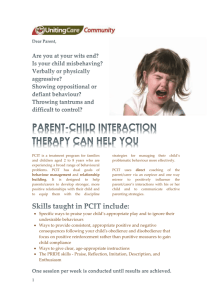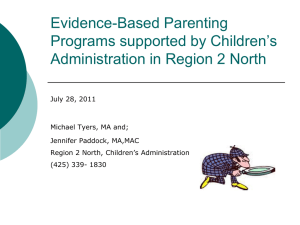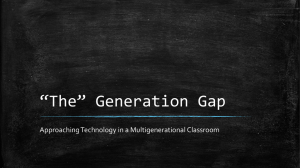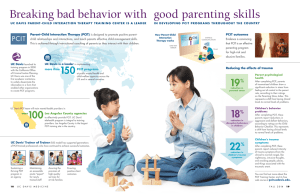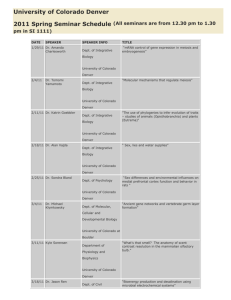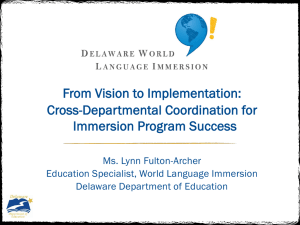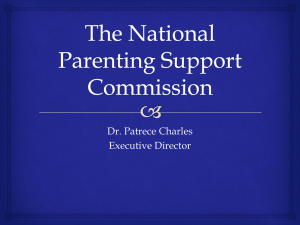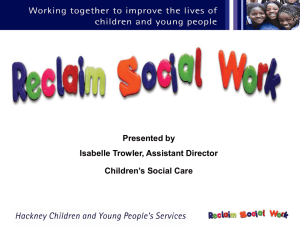The Buffering Toxic Stress (BTS) Consortium
advertisement
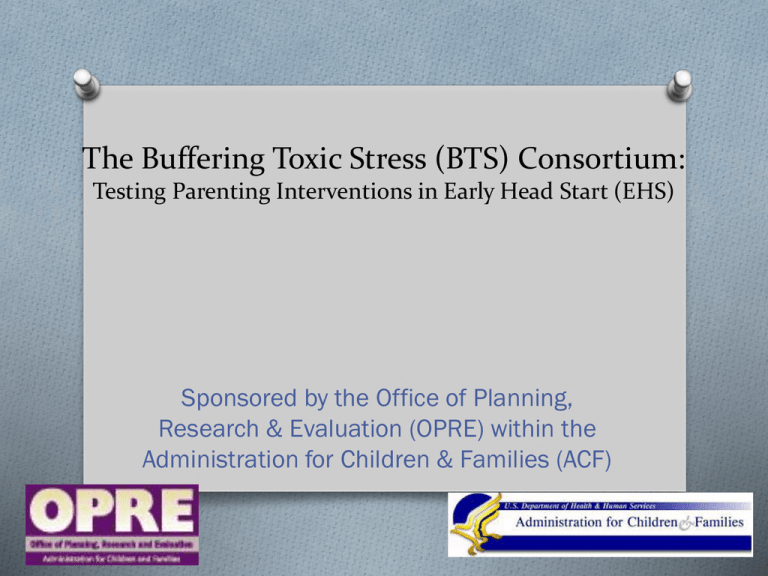
The Buffering Toxic Stress (BTS) Consortium: Testing Parenting Interventions in Early Head Start (EHS) Sponsored by the Office of Planning, Research & Evaluation (OPRE) within the Administration for Children & Families (ACF) Goals O Each site must: O Work to empirically validate the assessment of toxic stress O Test a promising intervention(s) O Evaluate intervention implementation O Include assessments of the hormone cortisol Research Sites & Principal Investigators O New York University: Clancy Blair & C. Cybele Raver O University of Colorado: Michelle Sarche & Misty Boyd O University of Delaware: Rena Hallam, Myae Han, Jason Hustedt, & Jennifer A. Vu O University of Denver: Sarah Enos Watamura O University of Maryland: Lisa Berlin & Brenda Jones Hardin O Washington University: John N. Constantino Intervention Required Components O Each site selected their own intervention based on their sites specific needs and resources, and their estimation of the research body behind each O All interventions target parents as the first critical support for infants and toddlers – and the barrier between what is tolerable and what is toxic O Families served must be attending Early Head Start programming of some type (home visitation, center care etc.) Interventions by Site O New York University: Play and Learning Strategies (Pals) O University of Colorado Anschutz Medical Campus: Parent-Child Interaction Therapy (PCIT) & Mindfulness-Based Emotional Availability Intervention O University of Delaware: Promoting First Relationships (PFR) O University of Denver: Filming Interactions to Nurture Development (FIND), and FIND+ Parent Focused Support O University of Maryland: Attachment & Biobehavioral Catch-up (ABC) O Washington University: Incredible Years Toddler Basic Parenting Program (IYT) New York University O O O O O Intervention Name: Play and Learning Strategies (PLAY) Intervention Developer: Landry Population: primarily low income Latina mothers and children Location: New York City Intervention components: Family coaches deliver the intervention by visiting families on a weekly basis over the course of three months O Each session includes a discussion of the parent's practice during the preceding week; introduction of the new topic; viewing of educational videos demonstrating the skill; guided, videotaped practice using the skill with her own child; review of the videotaped practice; and planning for practice during the upcoming week. O University of Colorado Anschutz Medical Campus O Intervention Name: Parent-Child Interaction Therapy O O O O (PCIT), and Mindfulness Based Emotional Availability Intervention (MEAI) Intervention Developers: PCIT - Eyberg; MEAI – Beringen Population: American Indian Location: A mid-western state (not Colorado) Intervention components: O PCIT first mastery is obtained with following the child’s lead in play; then behavioral management strategies are taught O MEAI is a 4-session group format parent training in stress management and being in the moment to support emotional availability to children University of Delaware O Intervention Name: Promoting First Relationships (PFR) O Intervention Developers: Kelly, Zuckerman, Sandoval, Buehlman) O Population: 45% African American; 35% Hispanic/Latino; 15% White O Location: Delaware O Intervention components: O 10 sessions, videotaped feedback, strengths based, focused on 5 components (offering love and attention every day; responding with empathy and understanding; providing comfort when upset; offering a predictable world; and promoting play and exploration University of Denver O Intervention Name: Filming Interactions to Nurture O O O O Development Intervention Developer: Phillip Fisher Population: 60% immigrant families; majority Hispanic families Location: Denver metro area Intervention components: O Video-coaching method; 10 sessions; strengths- based; uses micro interactions and very short clips to illustrate them; works on 5 building competencies (sharing the focus of attention; supporting and encouraging; naming; back and forth; endings and beginning) University of Maryland O Intervention Name: Attachment & Biobehavioral O O O O Catch-up (ABC) Intervention Developer: Dozier Population: Location: Maryland Intervention components: O Videotaped, uses highly trained coaches, near continuous “in-the-moment” coaching feedback, focuses on nurturance, following the child’s lead, and non-frightening caregiving behavior University of Washington O Intervention Name: Incredible Years Toddler O O O O Basic Parenting Program (IYT) Intervention Developer: Webster-Stratton, Reinke, & Herman Population: Location: Youth in Need sample drawn from urban, suburban, & rural Missouri Intervention components: O 4-8 sessions depending on child age; emphasis on child-directed play, emotion “coaching,” praise and encouragement, management of common early childhood tasks, and parental self-control Shared Intervention Components O Careful assessment of family characteristics O Attachment/positive parenting focus O Theoretically grounded O Most are relatively short interventions (4-16 weeks) O Most include videotaping O Most involve coaching Differing Intervention Components O Strengths based only vs. strengths based O O O O O and corrective Who delivers the intervention (EHS providers, outside coaches etc.) Level of training needed for interventionists Sample sizes and populations served Type of control or comparison group Study location BTS Consortium Timeframe O $12,000,000 awarded in September, 2011 O Study length: 5 years O Expected conclusion date: August 2016 O First data available: 2014 O Complete data available: 2017
